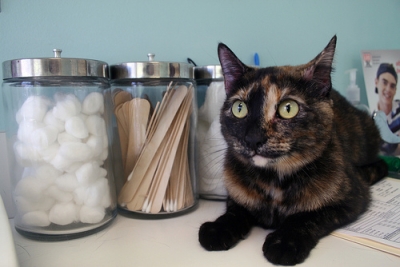Nasopharyngeal polyps are noncancerous (benign) growths. They are tissues that affect the pharynx, nasal passages and ear canals. The pharynx is part of the throat connected to the nasal and oral cavities that propels swallowed food into the esophagus.
The polyps are usually seen in young cats. The mass can be red, pink or gray and appears in ear canals or on the soft palate in the mouth. They usually do not originate behind nasal cavities and above the soft palate, but in the tubes connecting the middle ear to the nasopharynx.
There are theories as to why nasopharyngeal polyps occur, but none for sure. One is a congenital defect in the ear canal. Another is that chronic respiratory infections are the cause.
Symptoms can be nasal or ear discharges, difficult or noisy breathing, sneezing, gagging, head shaking or tilting, balance problems, changes in vocalization, snoring, Horner’s Syndrome signs. A noisy sound can seem as though the cat is trying to clear its throat. As polyps grow larger, the cat may experience difficulty swallowing, in which case the cat refuses food and loses weight.
Diagnosis is made through x-rays, CAT scan or MRI.
Treatment may involve surgical removal of the growth. Under anesthesia, with a special instrument, the surgeon can pull out the growth, hopefully with the stem which attaches it to the area. It’s important to have an experienced surgeon familiar with the procedure as there are many nerves and blood vessels in the area that could be damaged.
After surgery, care includes administering antibiotics, steroids and pain relievers. Ear drops may be advised to reduce the chance of polyps recurring.



